
Creating Stunning QR Codes with Artificial Intelligence: Step-by-Step Guide

Creating Stunning QR Codes with Artificial Intelligence: Step-by-Step Guide
Key Takeaways
- AI-generated QR codes are visually stunning and function as expected upon scanning with your phone.
- Illusion on Replicate is the top QR code generation AI, allowing for easy creation without technical expertise.
- Adjusting parameters like Negative Prompt, Inference Steps, and ControlNet Condition Scale can improve QR code output quality.
I think we can all agree that the classic black-and-white QR codes are convenient, but they’re ugly. For designers, it’s hard to integrate without breaking the color scheme of the whole design. And to the audience, they just look plain and boring. Happily, you can let AI generate stunning QR codes in a way that humans just cannot.
Why AI Makes Better QR Codes
Before AI, you could only add a splash of color to a regular QR code or throw in a simple icon, but modern generative AI makes that look like amateur work.
What I particularly love is that they’re not trying to replace human artists. AI QR codes have carved out a little domain of their own. Regardless of your stance on AI-made pictures, you can agree that these AI QR codes created by nhciao and HOLUPREDICTIONS are just beautiful.
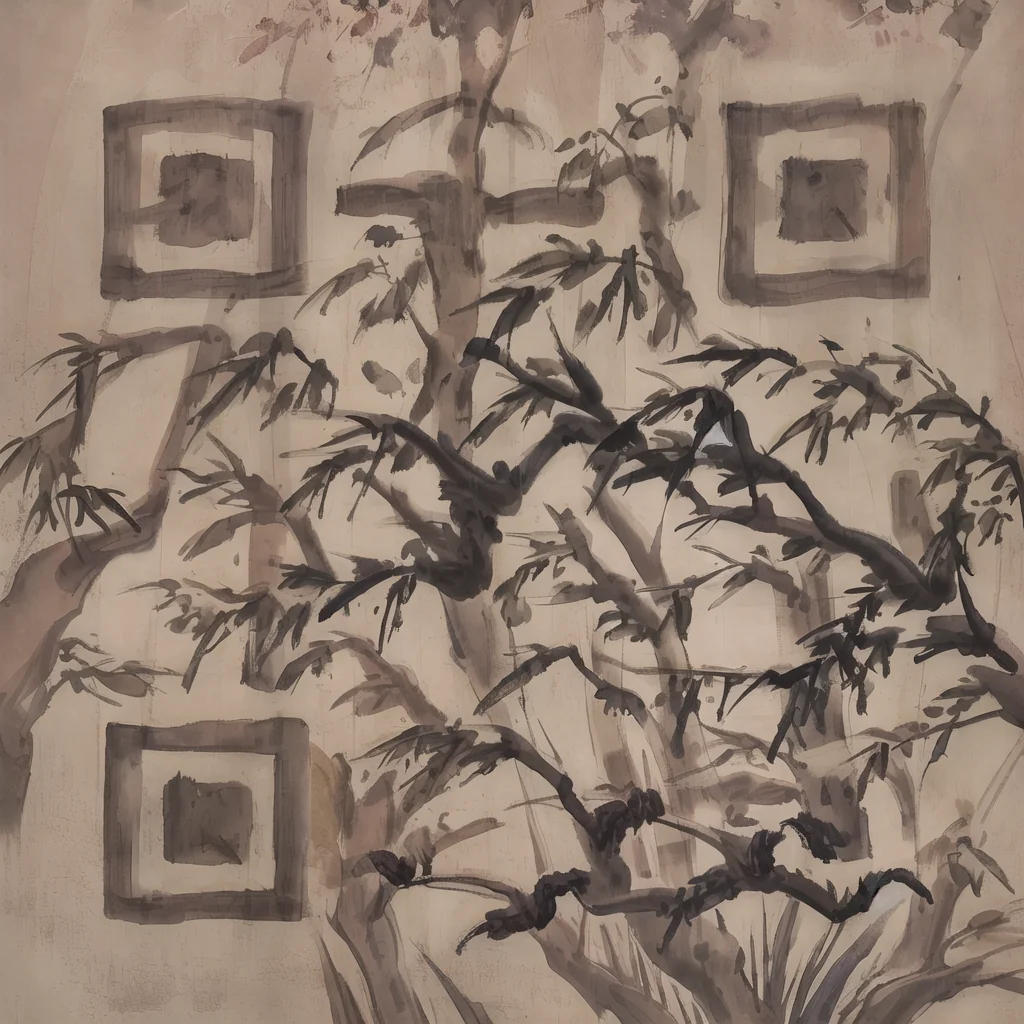
nhciao / Reddit

nhciao / Reddit

nhciao / Reddit
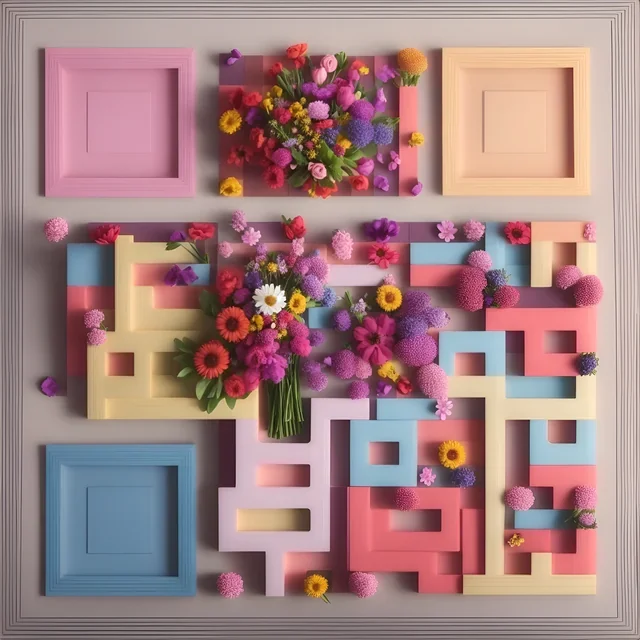
HOLUPREDICTIONS / Reddit
Close
AI-powered QR codes are not just pretty and creative—these QR codes work . You can scan any of them with your phone and see for yourself.
The best part is that you don’t need any technical know-how to create them. Most of the time, it’s as simple as typing a text prompt and hitting Enter. Just as easily as you would create a regular QR in a browser .
So, for your next flyer or poster that needs a QR code, why not turn the whole design into a QR code? Here’s how you can create your own pretty quick response codes using AI.
How to Generate QR Codes Using AI
Replicate is a platform that lets you run AI models within your browser. It’s fast and effortless. I tested every QR code generation AI on Replicate and found a clear winner: Illusion. The Illusion AI is based on Monster Labs’ QR code model, and it’s arguably the most powerful of the bunch.
Go to Illusion on Replicate and click “Sign in with GitHub.” You’ll be redirected to GitHub where you can either sign up or sign into GitHub. It only takes a few steps to join.
Sometimes Replicate will let you run the model without signing in first. In that case, you’ll see the “Boot + Run” button instead of the “Sign into GitHub” action.
Once that’s done, open the Replicate page again and click Sign into GitHub. Authorize GitHub to access your Replicate account. You’ll land on the Illusion playground automatically.
Now for the fun part. Type your prompt and paste the link under QR Code Content. Scroll down to Image File and delete the link that’s present by default. Now just hit Enter or click “Run.” It’ll take a few seconds to process and output a stunning QR code.
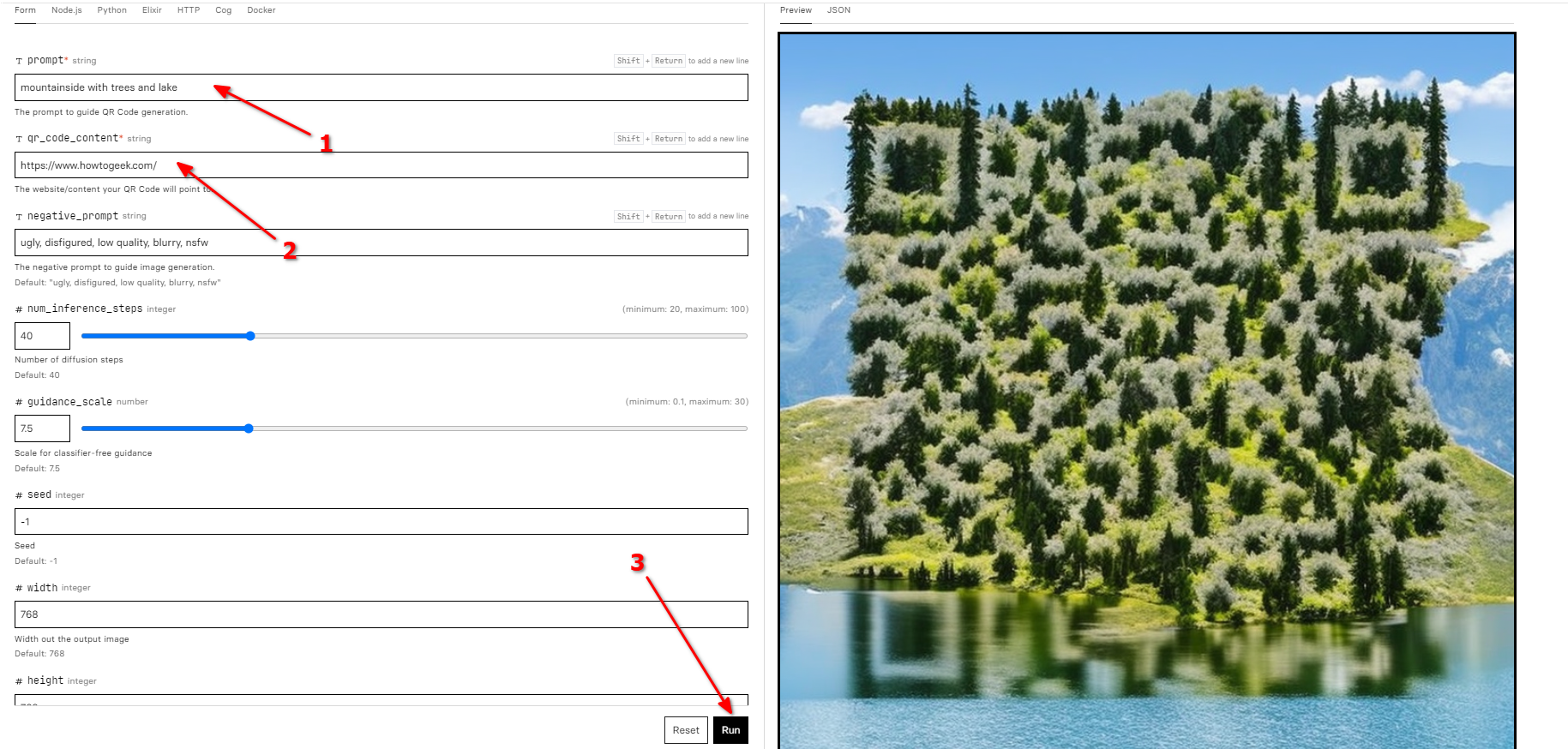
Scan to test it a couple of times and on a few different screens to see if the QR code is functioning properly.
The AI can be hit-and-miss sometimes, so you might have to tweak the parameters of your prompt to get a good output.
The first thing you can adjust is the Negative Prompt. You can write things here that you want to exclude from your output. Keywords like low quality, blurry, or distorted are always good choices.
Next up, we have the number of inference steps. Every AI generation starts out as a bunch of noise, and it’s denoised repeatedly to refine that mess and create a clear, coherent picture. The higher this number, the more detailed and higher quality the output. But that’s only up to a point. After a limit, it just adds to the processing time with barely any gains in the quality. The default is 40, but you can safely move the slider between 30 and 50.
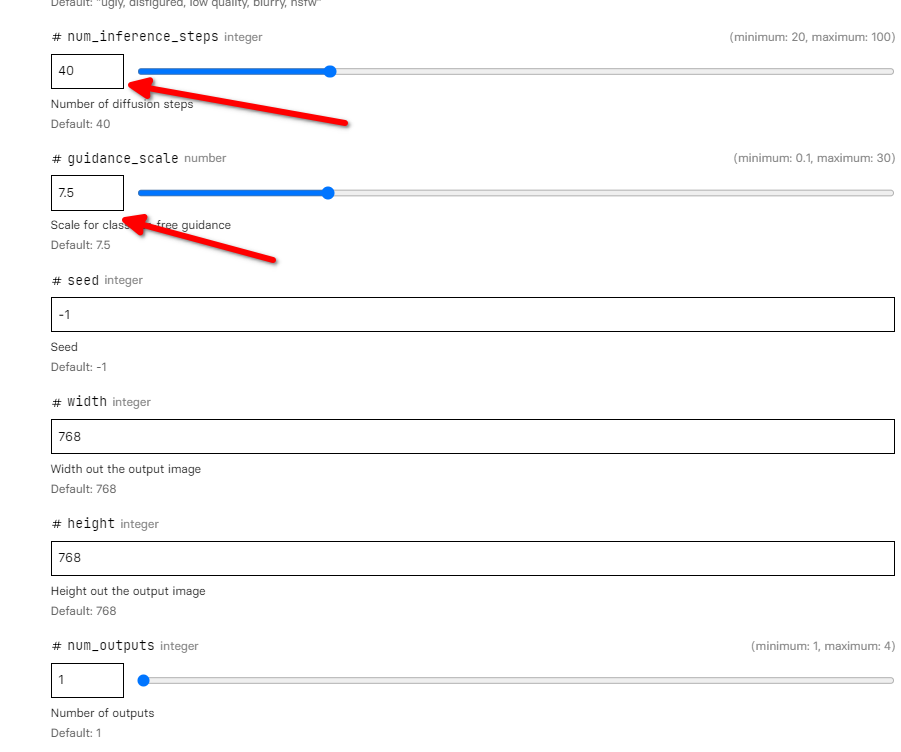
The guidance scale is pretty simple. It just determines how closely the output will stick to your initial prompt. You can lower this number to give AI more freedom or set it higher to limit it strictly to your specific prompt. The default is 7.5. But I found that anything between 4 and 8 works just fine.
You can safely leave the Seed settings untouched. The width and height are self-explanatory—that’s how you set the resolution of your output image.
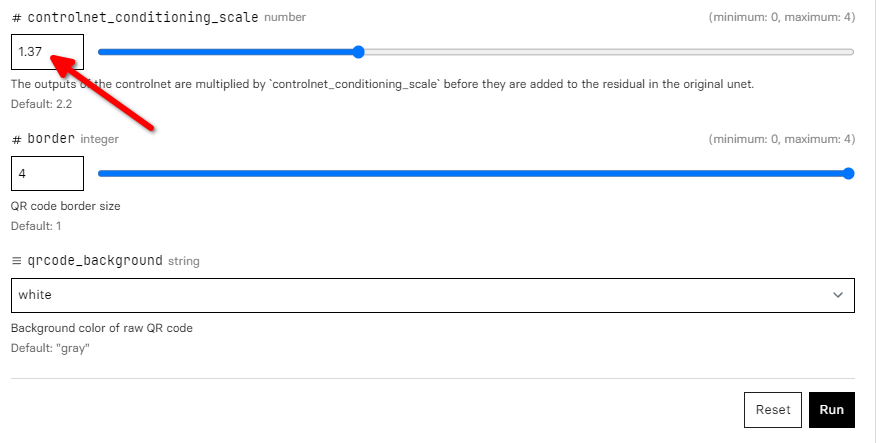
The number of outputs can be set to 4, meaning you can get as many as four generations on every run.
The image tab is where you can upload a pattern (like a spiral) and the AI will generate a complex but recognizable morph of that image. Something like this. You’ll have to leave this section blank to generate QR codes though.
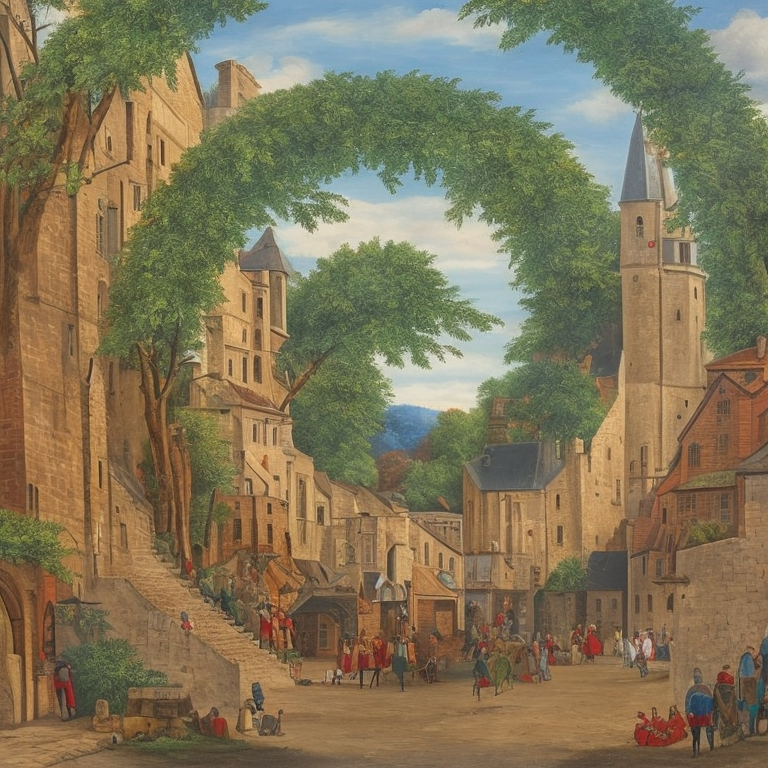
andreasjansson / illusion
ControlNet Condition Scale is the one setting you’ll be fiddling with the most. It controls how “QR code-like” the final output will look. The higher this number, the more your output looks like a regular QR code. Set it lower, and it’ll create more “artistic” and blended variants.
It’s one “1” by default. Anything above 2 turns the output into a regular black and white QR code. Numbers below 1 usually return a nice picture, but it’s unscannable (pretty much useless). Most prompts have a sweet spot between 1 and 2. I set my input to 1.37.
The border is another interesting setting. You can use a higher number here to get clearly defined edges on the output. Setting it to “1” or “0” returns a boundless code that stretches to cover the entire canvas.
Here is the final result.

Some Pro Tips
Not every generation made with Illusion is going to be usable. It can be hit-and-miss (especially when the parameters aren’t carefully selected). With the right configuration, almost every output should be functional. But I recommend you check and double-check the QR codes before putting them to use. Scan them on different screens, under different lighting, and from different distances. Sometimes these QR codes won’t work if you get too close to them (the less defined ones in particular).
Stock Android camera apps in some phones (like Samsung’s) just don’t read these artistic QR codes. But if you download a scanner from the Play Store, the same phone should pick up the AI QR codes. But iPhones seem to be far better at reading them by default. I tested the QR codes with the stock iPhone 12 Pro camera, and it read them well every single time.
I also suggest keeping the border set to three or four. Your QR codes won’t “blend” perfectly into their surroundings, but it’ll give you more usable results. Another way to get more usable QR codes is to use shortened URL codes. Longer texts are harder to work into QR codes.
Finally, some prompts just work better as QR codes. Prompts with clearly defined visual structures (architecture, abstract shapes, machinery) play nicer with QR codes.
There you have it. Now you know the resources and tricks you need to generate stunning QR codes that wow your audience every time.
- Title: Creating Stunning QR Codes with Artificial Intelligence: Step-by-Step Guide
- Author: Jeffrey
- Created at : 2024-08-26 10:18:48
- Updated at : 2024-08-29 11:46:21
- Link: https://some-knowledge.techidaily.com/creating-stunning-qr-codes-with-artificial-intelligence-step-by-step-guide/
- License: This work is licensed under CC BY-NC-SA 4.0.